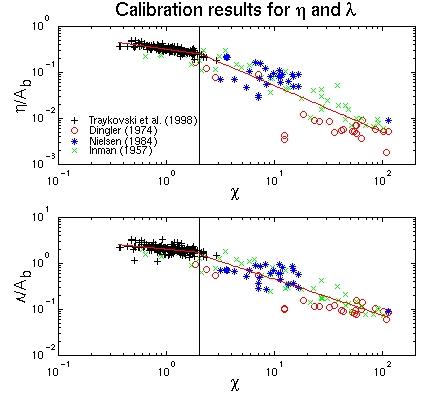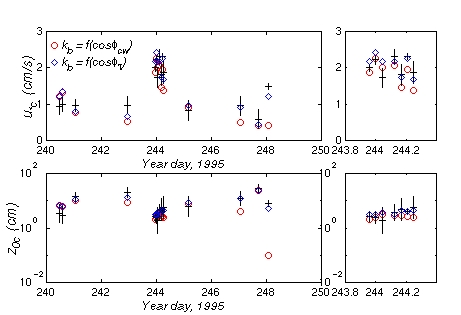Ripple Geometry and Bottom Roughness
1) The equilibrium range is characterized by long-crested vortex ripples.2) In this range, ripple height (eta) and length (lambda) are proportional to Ab, the maximum excursion amplitude.
3) To predict these ripple properties, we modified Wikramanayake and Madsen's (1991) parametric model by combining historical data sets they used and data collected by WHOI scientists at LEO-15. The results are shown below.


Bottom Roughness

The two panels above illustrate the importance of the relative direction between the wave and current in calculating bottom roughness. The left panel shows a wave dominated scenario, where the mean flow is advected back and forth along lines running nearly perpendicular to the ripple crests (wave direction). The right panel illustrates current dominated conditions, where the mean current primarily flows along a ripple crest or trough with little relative lateral motion. Even though the direction between the wave and current is large for both cases, the effect of the ripples under wave dominated condtions will be important for the current.
